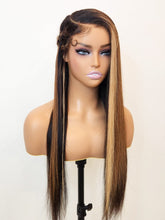Types of Knots

The ultimate goal of making your lace wigs and closures/frontals as natural as possible can be achieved based on the technique used to attach the hair strands unto the lace material.
Therefore, it is important to know that a knot is formed when the hair strands are tied onto the lace and stands as a way of securing the strands. There are many techniques in doing this; hence, we have put together a list of a few types of knot techniques used when constructing your lace wigs and closures/frontals.
Most popular types of knots:
- Single knots – As the name suggests, this ventilation technique creates very small knots on your lace which in turn produces a very natural looking hairline. However, though this is highly desirable it is good to know that this technique leaves your lace closures/frontals a little more susceptible to shedding. This is because single knots tend to make the lace more fragile and delicate.
- Double knots – this technique typically uses more hair strands, and is often more secure than a single knot. Another difference between the two is that with double knots, the knots tend to be relatively bigger in appearance since there are typically two or three hair strands knotted into the lace.
- Invisible (reverse triple) knots – this technique gives you a knot-free illusion. These knots are often hand-tied and will give you a very realistic scalp.
When dealing with knots another thing to consider is whether it is bleached or unbleached.
Keep in mind however, that though the damage done by bleaching the knots maybe difficult to reverse, the good thing is that you will be able to have your closure/frontal looking even more realistic than ever before.






































































































































































